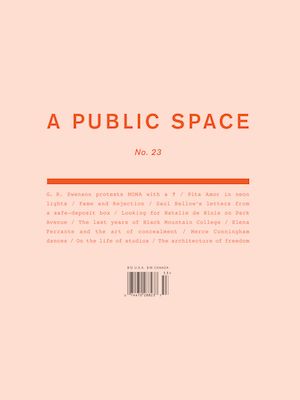Essay
She’ll Make Herself Alive
Antonio Romani
Log in to read the rest.
If you are a subscriber but do not currently have online access, please contact us to link your subscription at subscribe@apublicspace.org
Not a subscriber?
Not yet a subscriber? Join us now, and become a part of the conversation.
About the author
Antonio Romani’s translation (with Martha Cooley) of Antonio Tabucchi’s story collection Time Time Ages in a Hurry was published earlier this year by Archipelago Books.
